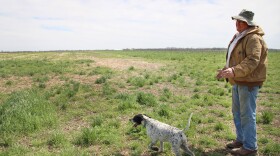-
Park leaders share what it takes to transform a golf course into a safari park, the zoo’s aim to bolster endangered species, and how the park will be a boon to local wildlife and the regional economy.
-
Artificial floating wetlands naturally filter water from contaminants and excess nutrients. There are about a dozen in the state, and the Missouri Department of Conservation wants to add more.
-
Corn and soybeans dominate the Midwestern landscape today, but farmers are integrating strips of native prairie back into their fields. This conservation practice has expanded to more than a dozen states, including Missouri.
-
The large, tropical-tasting fruit is still a relatively rare delicacy, but the push to eat local and potential environmental benefits are giving the pawpaw a wider reach.
-
The micro ecosystems are popular around the world but haven’t gained footing in the St. Louis region. Some people hope they could lessen the impacts of floods.
-
Scientists have looked at decades of data on trees and other native Missouri plants blooming. As the region warms, plants are reacting by changing their bloom times.
-
A local organization is asking for data on Ozark witch hazel to better understand the timing of the plant’s blooms and how that might relate to the changing climate.
-
The finicky plants are threatened by habitat loss and climate change, but as the Missouri Botanical Garden works to conserve them, scientists are learning the difficulties of growing native orchids in a lab.
-
Experts say the plants on the list are invasive and can quickly cause ecological harm.
-
The United Nations has declared 2023 the International Year of Millets — a type of small grain mostly grown in parts of Asia and Africa. The highly resilient and cost-friendly grains could make them the next crop for U.S. farmers in the midst of climate change.
Play Live Radio
Next Up:
0:00
0:00
Available On Air Stations










